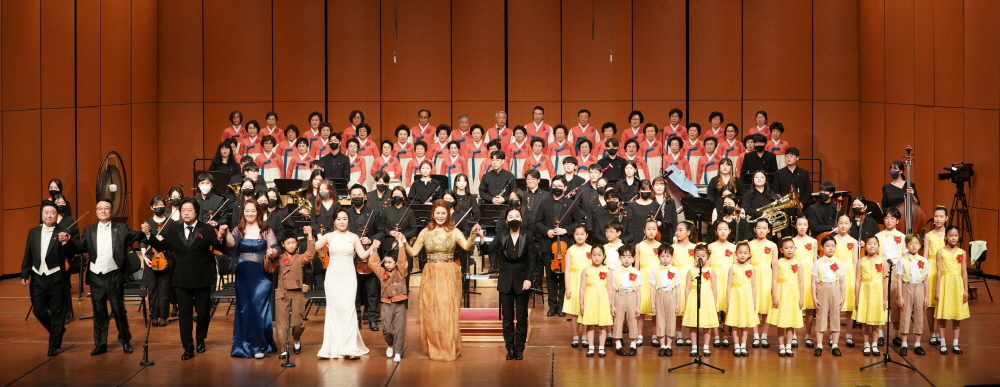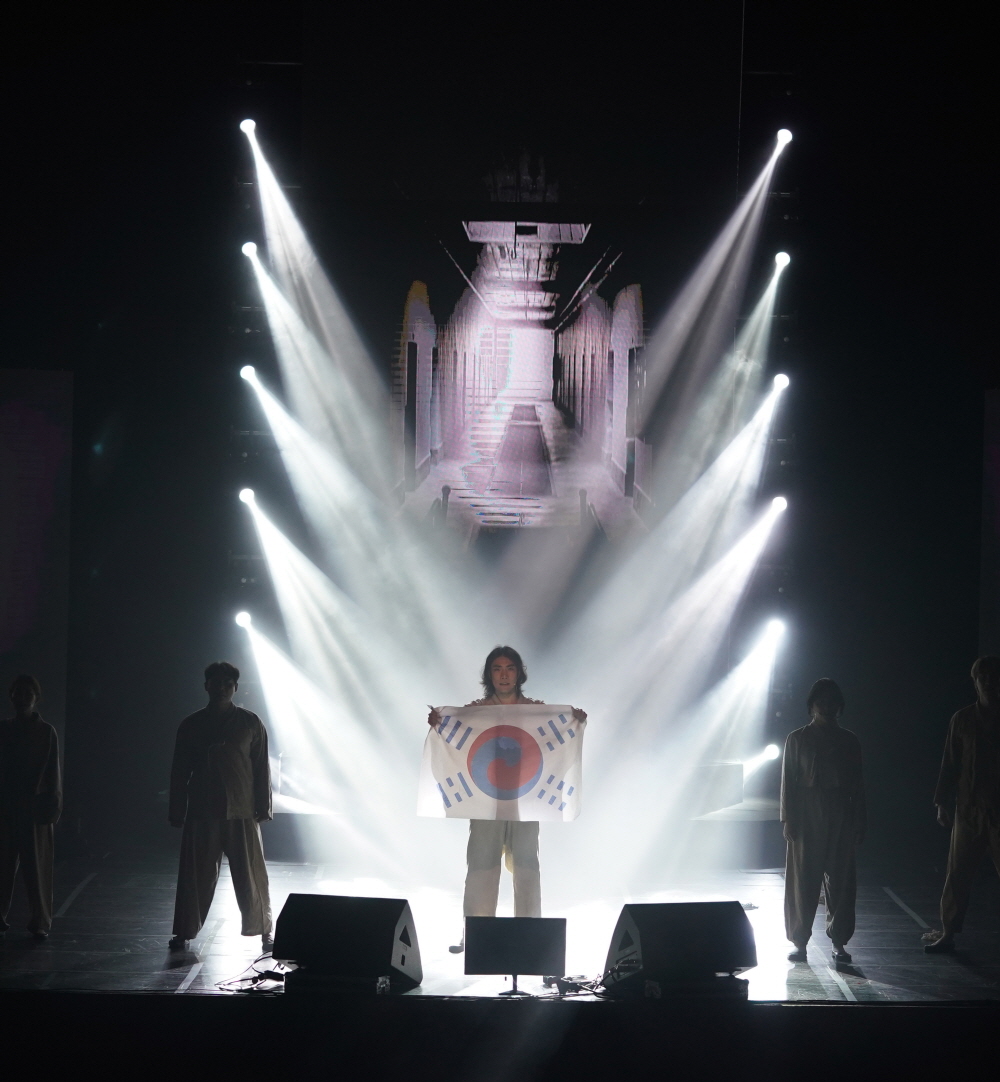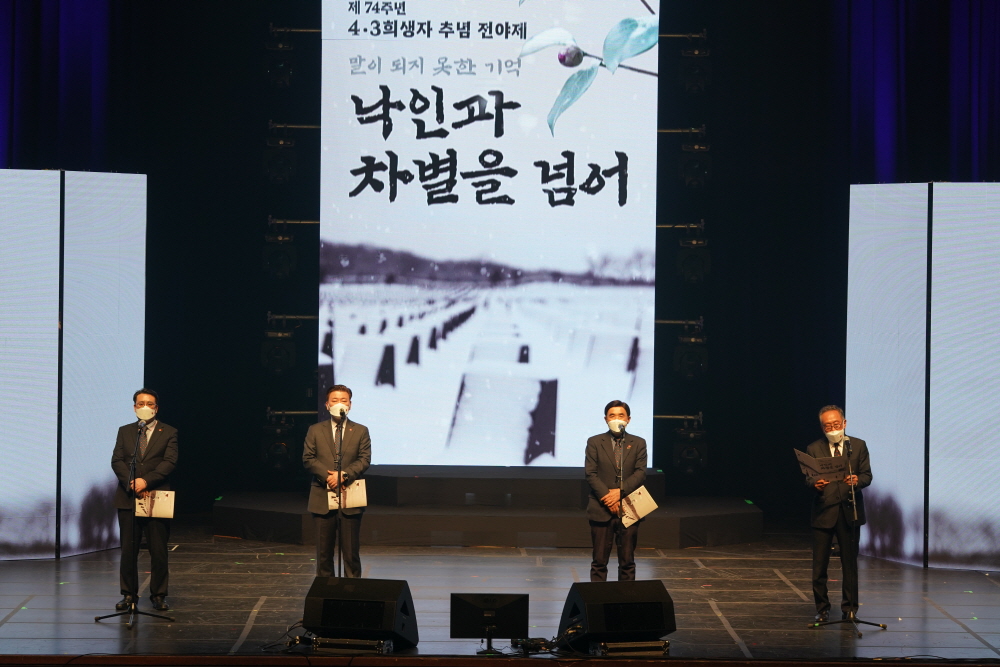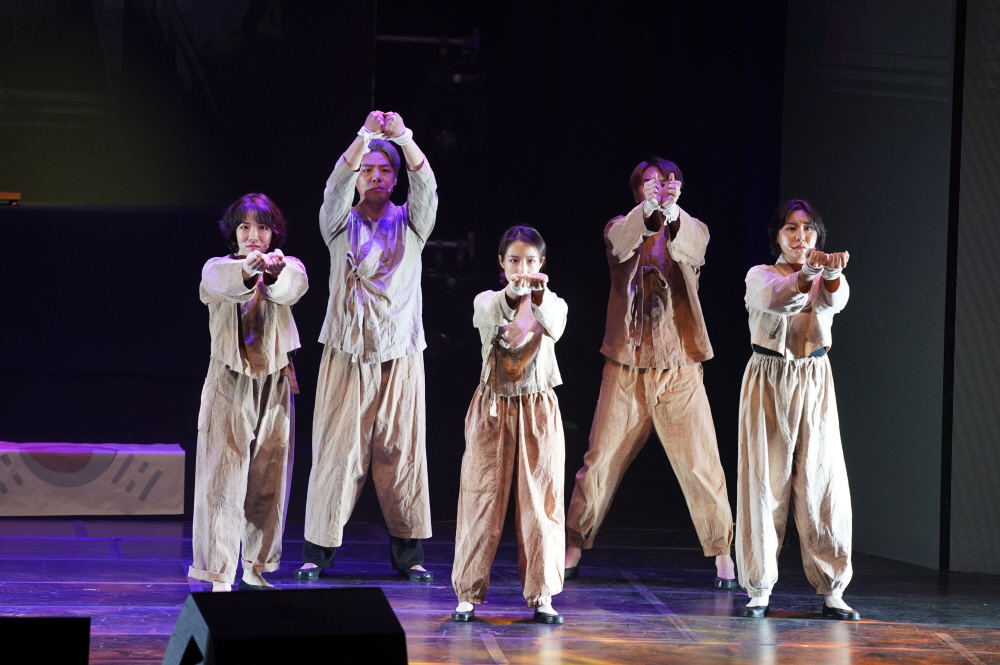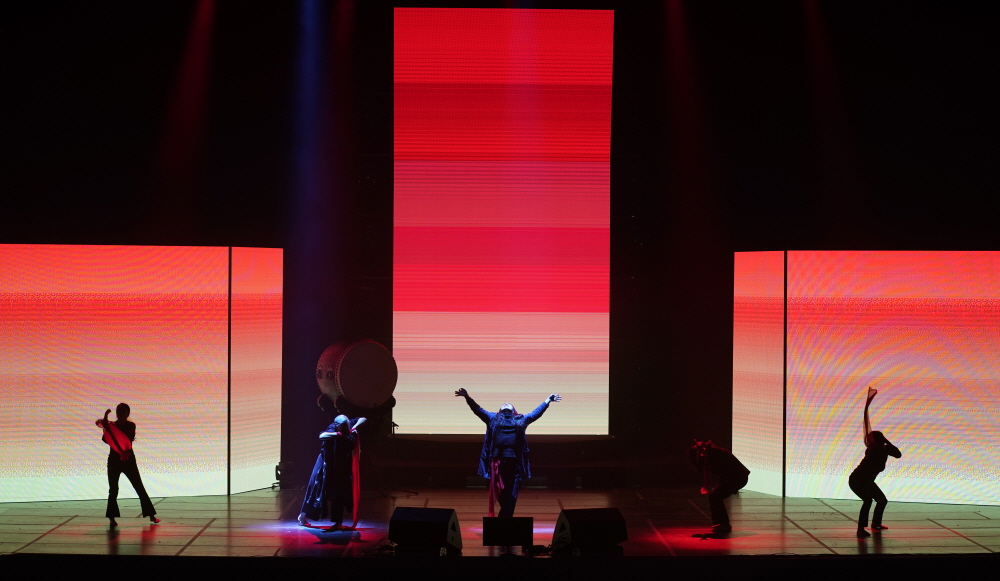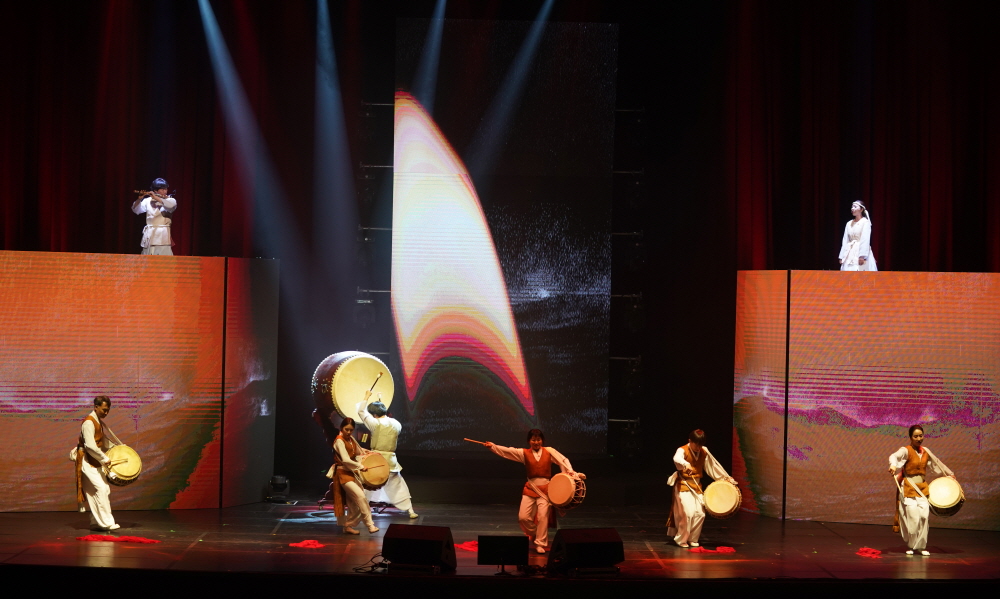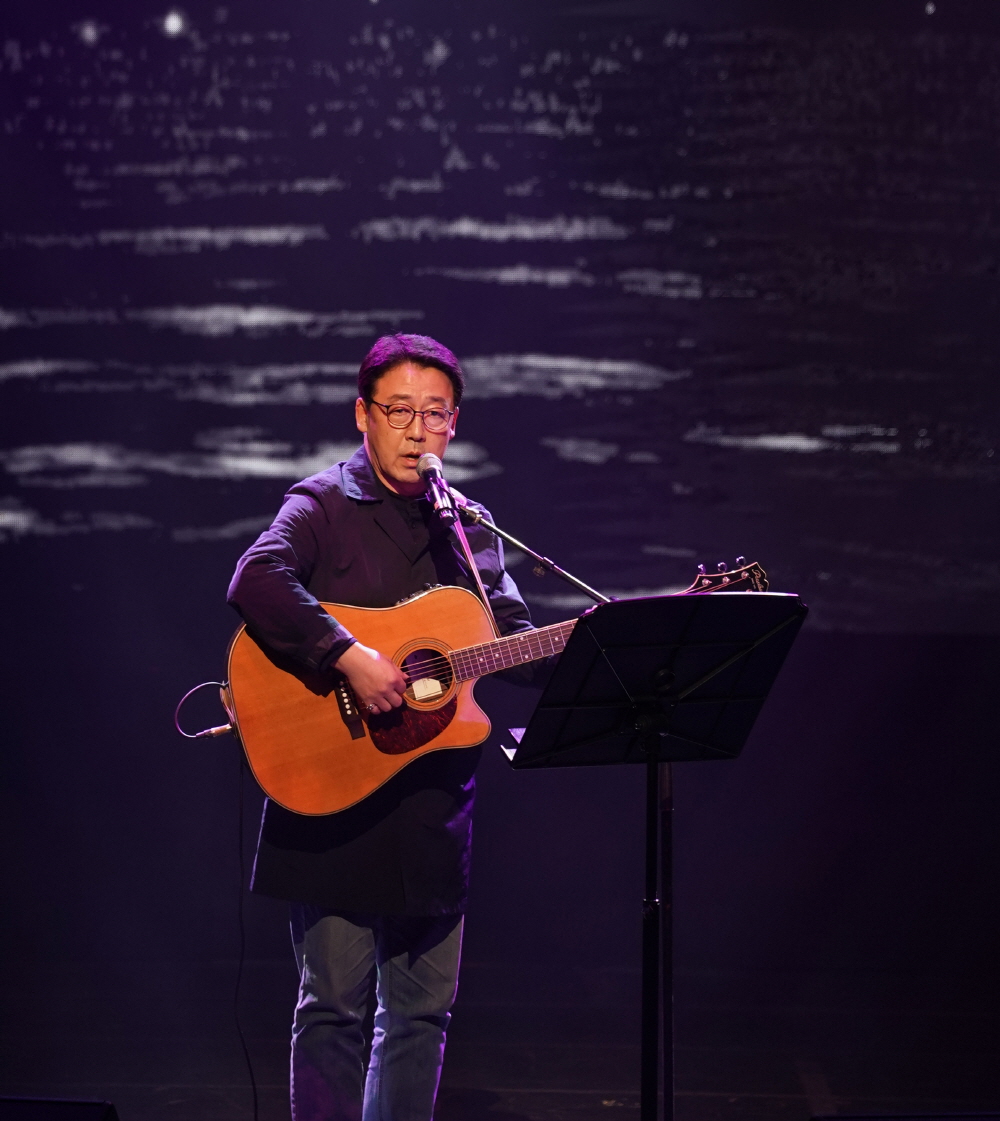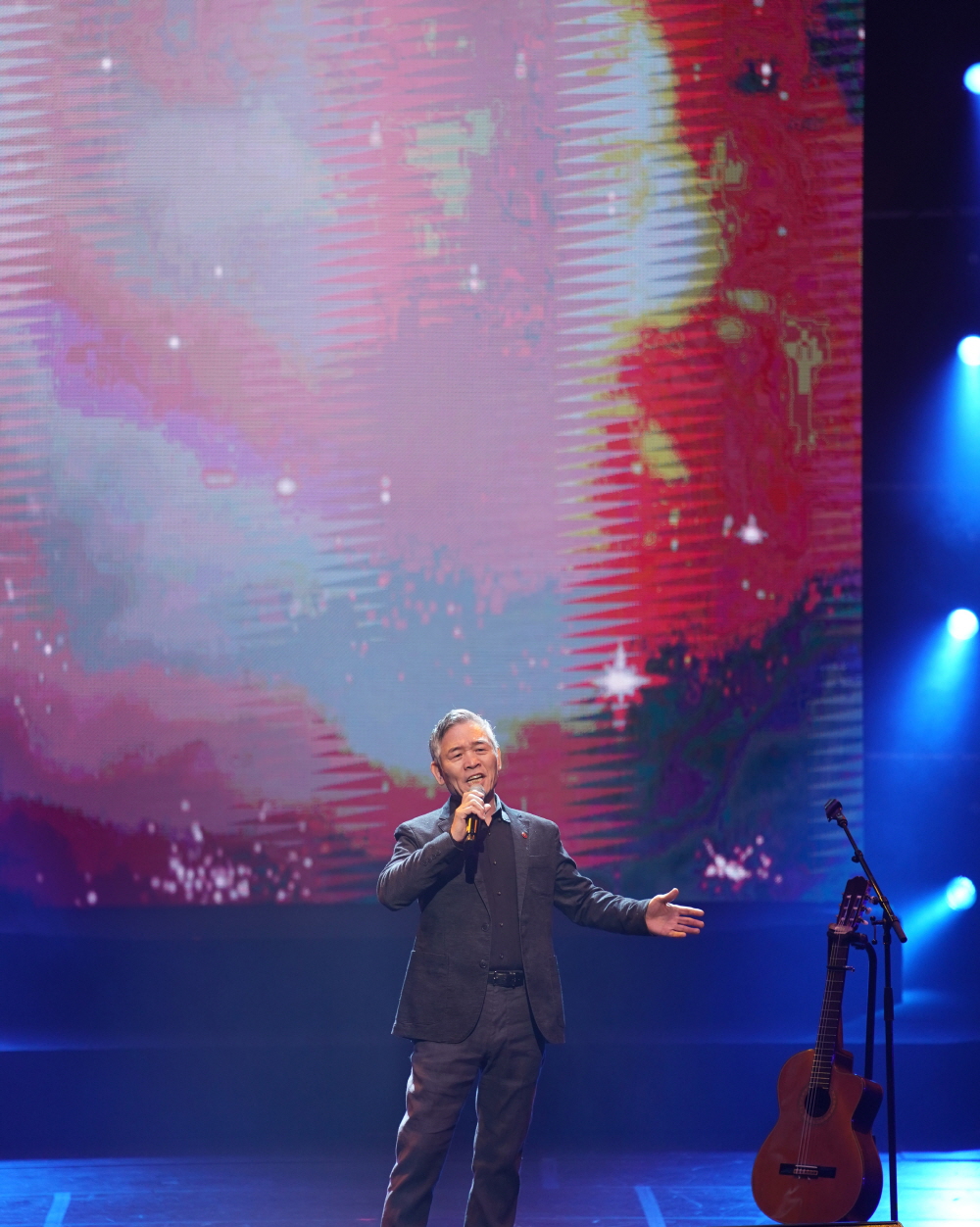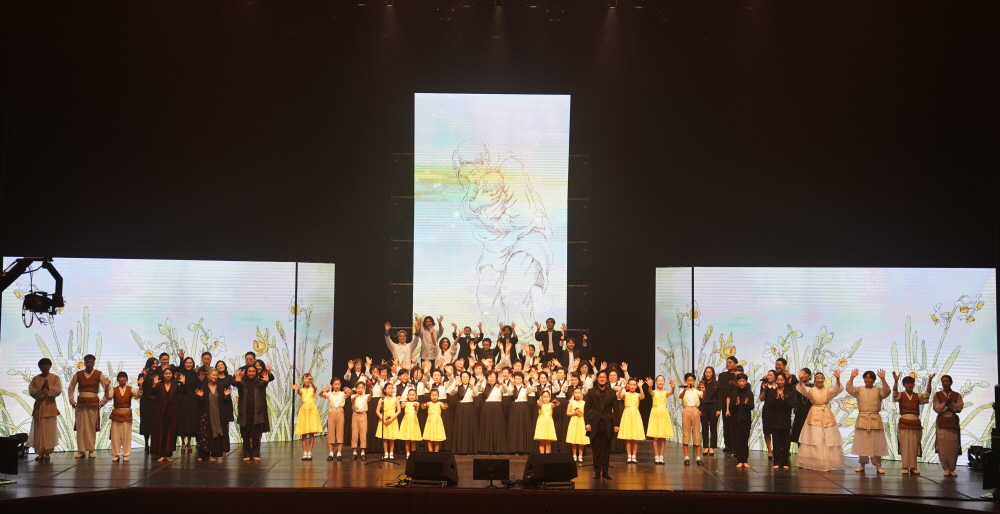News
Inheriting values of peace and human rights reflected in 4·3: The first street march in three years
Jeju 4·3 Peace Foundation invites college students for peace march and plans to promote various other projects
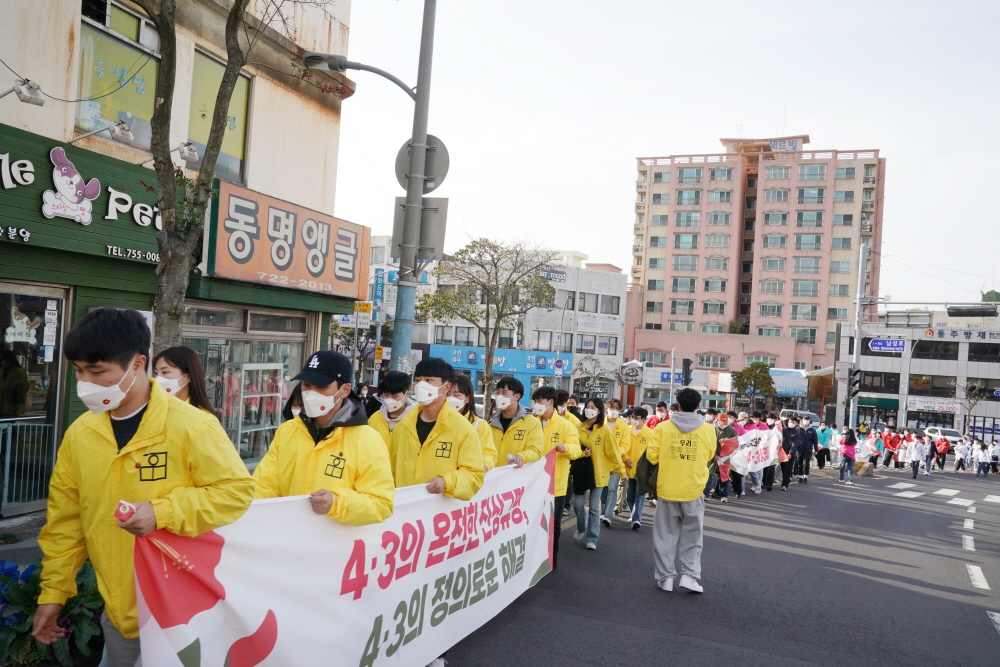
[A march of college students passes through the Nammun Intersection in Jungang-ro, Jeju City]
Jeju 4·3 Peace Foundation began the College Students 4·3 Peace March in 2015 and has since supported the autonomous memorial events organized by the nation’s undergraduates during the annual 4·3 week.
With the 2020 global outbreak of coronavirus, however, the foundation inevitably canceled the program, which was based on a rally and a street march. Nonetheless, the Korea Federation of National and Public University Student Associations, Korea Federation of Education University Students Associations, and Jeju-based college students replaced the street march with a contact-free event for the 4·3 week, carrying out various programs in their respective locations. And when the spread of COVID-19 began to ease in April 2022, college students in the Jeju region resumed the street campaign. It has become possible to promote programs that befit the intent of the College Students 4·3 Peace March.
Street march: Jeju youth raise voices for resolution of 4·3
On April 1, 2022, the Jeju College Students 4·3 Peace March was held by Jeju National University’s Student Union “US” (President Yang Woo-seok), Jeju Tourism University’s Student Union “Tie” (President Lee Yoon-hee), Jeju International University’s Student Union “Stone Wall” (President Yang Ji-hyeok), and the election campaign headquarters of Cheju Halla University’s Student Union “Youth” (Presidential candidate Lee Gyeong-seok). On the day, more than 200 local college students marched on the streets in Jeju City, starting from Gwandeokjeong Pavilion, through the intersections around Jungang Rotary, the Citizen’s Center, and Gwangyang Rotary, until they reached the front gate of Jeju City Hall. The street march was concluded with a joint statement, where the young men and women in Jeju vowed to inherit the values of peace and human rights reflected in Jeju 4·3.
The local college students were determined to raise their voices, just as their foregoers, including college students and other young locals, took the lead in resolving Jeju 4·3. “We sincerely hope that the people of Jeju will be able to wholeheartedly welcome the spring with the just resolution of Jeju 4·3,” they said.
In particular, the Jeju-based students expressed their commitment to inherit the values of peace and human rights reflected in Jeju 4·3 and unanimously urged the government to swiftly supplement the special clauses on family relations in the Jeju 4·3 Special Act and take ensuing measures. The students also demanded that the United States admit its responsibility for Jeju 4·3 and officially apologize to the victims and their families. Finally, the young Jeju residents emphasized the need for President-elect Yoon Suk-yeol to fulfill his campaign pledge to resolve Jeju 4·3.
Prior to the street march, the students volunteered to place condolence flowers in front of the 3,982 headstones for the missing Jeju 4·3 victims in the Jeju 4·3 Peace Park, praying for the rest of the souls of the deceased.
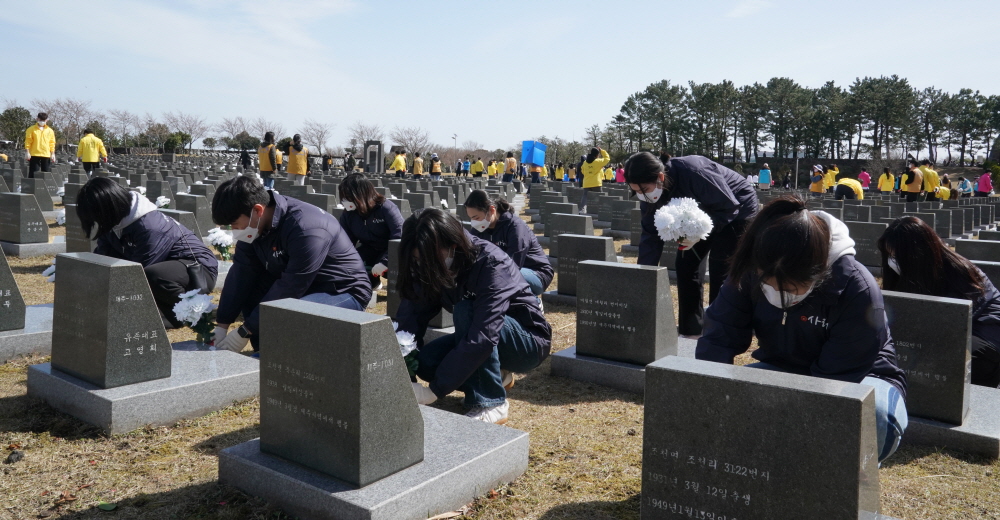
[Local college students volunteered to place condolence flowers in the Tombstone Park for the Missing.]
Popularizing 4·3 nationwide: students from around Korea join in commemorative event
The student unions of 21 colleges around Korea, including 13 colleges of national or public universities, eight educational colleges, and four Jeju-based colleges, set up and operated the Memorial Altar for the Jeju 4·3 Victims in their respective Student Union Halls or in other sites on campus. Visitors to the memorial altar were given a booklet, “Jeju 4·3 at a Glance,” to aid their understanding of Jeju 4·3, along with a camellia flower pin.
The national or public universities whose student unions participated in the program include: Seoul National University, Kangwon National University, Hanbat National University, Korea National University of Cultural Heritage, Jeonbuk National University, Incheon National University, Mokpo National University, Chungbuk National University, Kunsan National University, Korea National University of Transportation, Pusan National University, Chungnam National University, and Seoul National University of Science and Technology. The list of the educational colleges that joined the event is as follows: Jeju National University’s Teachers’ College, Jeonju National University of Education, Busan National University of Education, Chuncheon National University of Education, Seoul National University of Education, Gongju National University of Education, Gwangju National University of Education, and Korea National University of Education. In the Jeju region, the student unions of Jeju National University, Jeju National University’s Teachers’ College, Cheju Halla University, and Jeju Tourism University participated in the campaign.
Each college of Jeju National University also held diverse memorial programs on their own.
The College of Humanities staged the 4·3 Remembrance Challenge with the concept of Baekbi, a nameless monument in the Jeju 4·3 Peace Memorial Hall, where students were encouraged to leave comments related to 4·3, which is yet to be properly named. The college also offered a curated exhibition on 4·3, based on which a “Golden Bell” quiz contest was held to provide prize money to students with outstanding performances. These programs helped attract public attention by creating an opportunity for young people to feel a sense of achievement.
The College of Education produced and operated a space for a memorial record. In the space, visitors could leave memorial comments. A video on Jeju 4·3 was also screened and a quiz event was held in each department.
The Teachers’ College hosted different contests with the theme of Jeju 4·3, where participants created poems, slogans, and two-line acrostic poems.
“Come visit Jeju National University’s Little Exhibition Hall on 4·3”
In April, with the heated momentum generated along with the College Students 4·3 Peace March, a permanent exhibition hall on Jeju 4·3 was set up on the campus of Jeju National University for the first time. The university’s 54th Student Union “Us” and the Jeju 4·3 Peace Foundation turned the meeting room on the third floor of the Student Union Hall into the Little Exhibition Hall on 4·3, so that students can reflect on the historic event at any time. The exhibition hall consists of four exhibitions, a permanent memorial altar, and a video screening corner. The exhibits are titled “Jeju 4·3 Timeline”, “Jeju 4·3 Is a Historical Event of the Republic of Korea”, “A Photographic Revisit to Jeju National University’s Movement to Discover the Truth of Jeju 4·3”, and “College Students 4·3 Peace March – We Walked Together”.
The Jeju 4·3 Timeline was designed with the help of Park Gyeong-hoon, artist and Jeju 4·3 Peace Park consultative committee and Memorial Hall head who graduated from the university’s Department of Fine Arts. The photos showing the university’s movement to reveal the truth of Jeju 4·3 were donated by Kim Gi-sam, a Jeju-born photographer who captured the scenes on film in the middle of the movement.
Yang Woo-seok, president of the Jeju National University Student Union, said the student representatives created the space with the idea of enabling visitors to easily access the site in their daily lives and learn about Jeju 4·3. “We sincerely hope that all students will stop by at least once and reflect on Jeju 4·3 as part of the nation’s history,” he urged. Koh Hee-bum, director of the Jeju 4·3 Peace Foundation, stated that it is not easy to permanently provide space for education on 4·3 within the school premises. He also expressed his gratitude, saying that he was touched by how the students try to inherit their foregoers’ efforts to clarify the truth of Jeju 4·3. “Those who previously led the movement would be very proud of them,” he added. The Little Exhibition Hall on 4·3 will be open permanently throughout the year and will be managed and operated jointly by the Jeju National University Student Union and the Jeju 4·3 Peace Foundation’s Camellia Supporters.
